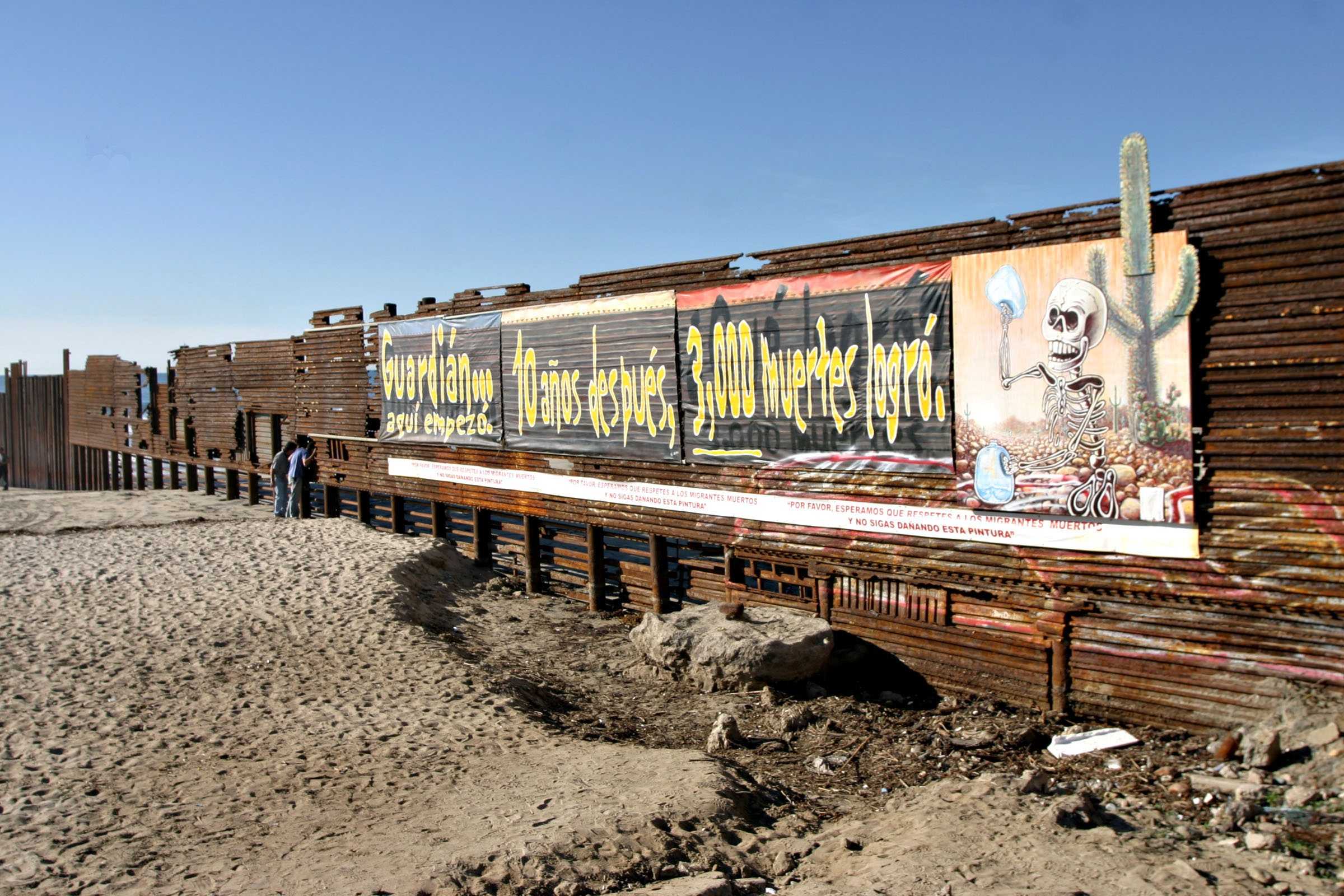 MCT Campus
MCT CampusDesert regions along the U.S.-Mexico border have become the final resting place for thousands of migrant workers and their family members. Crosses, shallow graves and skeletons scattered in the desert region now represent tragedies caused by desperation and the will to search for a better life.
Since the implementation of Operation Gatekeeper in 1994, estimates from the American Civil Liberties Union of San Diego claim as many as 5,600 people have died in the mountainous desert terrain as a direct result of the security plan. It was designed to prevent illegal immigration into the U.S. by erecting fortified fences and walls for miles along major smuggling routes and urban areas. Physical barriers and an increase in the presence of U.S. Border Patrol agents were meant to deter Mexican migrants from attempting to start a life in our country.
The policy proved effective in the fortified areas, but failed to deter migrants from crossing through alternate routes. Despite the efforts of Operation Gatekeeper and other similar border programs, such as Operation Guardian and Operation Hold the Line, the number of undocumented residents increased from an estimated 8.4 million in 2000 to 11.9 million in 2008, according to the Pew Research Center. Diverted routes ran through desolate terrain in every southern border state.
Within the first year of Operation Gatekeeper’s enforcement, the primary cause of death among migrants switched from traffic fatalities to deaths from hypothermia, dehydration and drowning. Every year, more migrants have died in these hazardous terrains, regardless of the public relations campaigns on both sides of the border that clearly advertise the dangers.
There is no way to know exactly how many migrants have died trying to cross, but the estimates that do exist clearly demonstrate that deterrence has failed. Our border is far from secure 8212; and at this point, our policies have become blatantly inhumane. Abject poverty and a violent drug war are pushing hundreds of thousands of people to risk their own lives and the lives of their family members by traveling through these regions. As many as 5,600 people have died on our soil as a result of this strategy already. That’s more than the total 8212; 5,402, at last count 8212; of U.S. soldiers that have died since the wars in Iraq and Afghanistan began in 2003 and 2001. This is a humanitarian crisis on our own soil.
The U.S. Border Patrol cannot be the only agency responsible for rescuing migrants. The federal government needs to create a separate agency specifically designed to perform search and rescue missions. If this organization is created, the U.S. could effectively utilize assistance from national and international organizations willing to prevent more deaths. The U.S. has punished humanitarian organizations for attempting to provide aid to migrants in the past. Much like the efforts of Operation Gatekeeper, harsh conditions will not prove as an effective deterrent to migrants.
Along with an additional search and rescue agency, the U.S. needs to create a centralized database so people can locate family members who have disappeared while attempting to cross the border. A report by the ACLU of San Diego noted that “in total disregard of international obligations, the federal government has shifted the responsibility of the treatment of the dead and their families to local authorities encumbered with shrinking resources and jurisdictional differences.”
This decentralized approach has left families frantically searching through multiple bureaucratic mazes that sometimes provide contradictory information. These people are trying to find missing or dead relatives. Through the current system, estimates show that a mere 75 percent of the recovered bodies or remains are positively identified. People have a right to know if their family members have died within our borders.
Our nation has attempted to stop millions of illegal immigrants from entering our country for decades. So long as the demand to enter the U.S. exists, millions of immigrants will continue to come. Former Homeland Security Secretary Michael Chertoff, who served during former President George W. Bush’s administration, claimed that a 2,000 mile state-of-the-art border fence has been estimated to cost between $4 and $8 billion dollars. Other estimates placed the price for a wall that would run the entire length of the border might cost as little as $851 million for a standard 10-foot prison chain-link fence with razor wire.
There is no inexpensive solution to secure our southern border.
The sooner our nation produces a comprehensive plan to prevent illegal immigration from Mexico, the sooner it will alleviate its obligation to absolving this humanitarian crisis. The way the wall stands, thousands will continue to die.
8212;Tom Hammel is a political science junior.
8212;This column does not necessarily reflect the opinion of The Daily Aztec. Send e-mail to opinion@thedailyaztec.com. Anonymous letters will not be printed. Include your full name, major and year in school.



